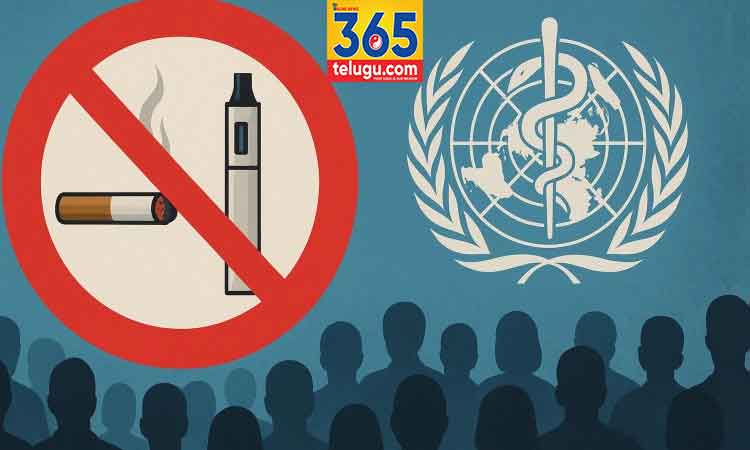365telugu.com online news,India,Novamber 18,2025:Tobacco use remains one of the most pressing global public health crises, claiming over eight million lives annually. A new international report suggests this devastating toll can be drastically cut by embracing the full potential of 21st-century health innovations, including tobacco harm reduction (THR), enhanced smoking cessation support, and early disease detection. Collectively, these measures could save more than 100 million lives worldwide by 2060.
With over 1.1 billion smokers globally, tobacco-related diseases pose a formidable challenge to health systems. The critical report, “Lives Saved: Saving 100 Million Lives by 2060,” authored by leading public health experts, including Project Leader Dr. Derek Yach and Dr. Delon Human, provides a clear blueprint for how science-based approaches can significantly reduce smoking-related mortality.

The report advocates for a pragmatic combination of traditional tobacco control and modern harm reduction. If 20% of the world’s 1.1 billion smokers switch to low-risk alternatives over the next 10–15 years (alongside improved quitting support), global smoking-related deaths could be halved by 2060. In the 23 countries studied, this dual strategy could prevent over 14 million premature deaths by 2060-effectively doubling the impact of current measures.
For India, which has one of the largest populations of adult smokers (with a prevalence rate of 21.8%), the adoption of these harm reduction strategies could potentially save approximately 8 million lives by 2060.
The report highlights that complementing traditional tobacco control with regulated, science-based alternatives would accelerate mortality decline by 25 to 50 percent compared to relying solely on existing measures. Middle-aged and older smokers, who are at the highest risk, stand to gain the most significant benefit.
Dr. Derek Yach shared his views: “The WHO’s FCTC has not kept pace with scientific and technological advancements. It’s time to recognise the potential of safer alternatives and prioritise harm reduction. The treaty’s current emphasis on bans and strict regulation, without distinction for risk, is outdated. We cannot afford to wait for a miracle. Saving lives requires bold action. Let us unite in our commitment to a smoke-free future – one where harm reduction leads the way.”
“We need a ‘reset’ of tobacco policy – a step change in ambition. Policymakers should not remain entrenched in old battles but recognize the mounting evidence that tobacco harm reduction, when done properly, works,” added Dr. Delon Human.

The authors strongly urge policymakers to base their strategies on evidence, not ideology. They recommend integrating tobacco harm reduction within national and global control frameworks, acknowledging safer nicotine alternatives as legitimate tools for reducing harm.
Governments are encouraged to adopt risk-proportionate regulation—distinguishing between combustible tobacco and lower-risk products—while implementing strict age verification, ensuring product quality and safety, and enforcing responsible marketing to protect youth.
Concurrently, strengthening cessation programs, promoting early disease detection, and expanding lung cancer screening must remain core priorities. Furthermore, fiscal policies should reflect relative product risks—imposing higher taxes on cigarettes and lower taxes on reduced-risk alternatives—to motivate smokers to switch.
The analysis delivers a simple yet profound message: the tools to end the smoking epidemic are available; what is required now is the courage and will to use them. By adopting evidence-based, compassionate, and appropriate policies, nations can transform a story of decades of loss into one of recovery and hope. For India, this represents more than just statistics; it is a critical opportunity to redefine the future course of public health.

